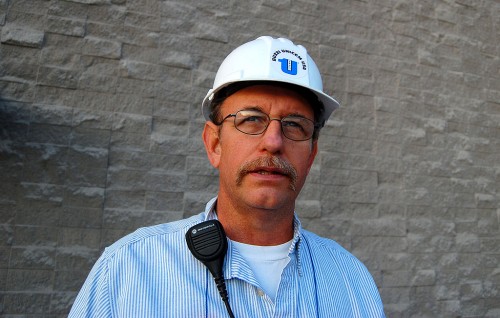 Without thinking I had a chance in the world of success, I approached Buzzi Unicem plant manage Steve Leus in the fall of 2010 to ask for a tour of the cement plant and quarry. That usually results in months of getting bounced from corporate type to corporate type, ending up in a “No.”
Without thinking I had a chance in the world of success, I approached Buzzi Unicem plant manage Steve Leus in the fall of 2010 to ask for a tour of the cement plant and quarry. That usually results in months of getting bounced from corporate type to corporate type, ending up in a “No.”
I showed up in Steve’s office with a stack of prints I had taken over the past 40 years from the air, from inside the caverns, from the quarry’s edge, and of the plumes of white particulate that used to belch from the stacks of the plant. We had a great conversation, then he handed me a hard hat and we were on our way. THAT’S the kind of manager I like to deal with.
There are some stories that paralyze me because they are special to me. This is one of those. I kept putting off and putting off publishing it because I wanted to research the history of the plant that has changed names many times, boil down Steve’s explanation of how rock becomes cement and do it right.
Let’s pull the trigger
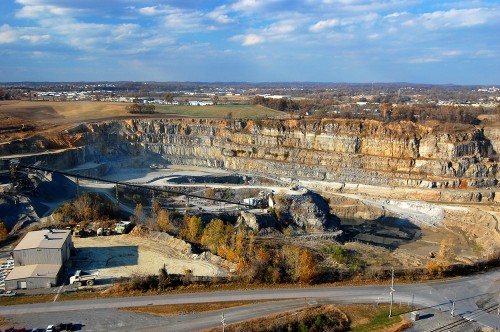 Today, more than three years later, I figured I’d better pull the trigger on this puppy and start publishing it in bits and pieces. I am NEVER going to do all that research and transcribe the paper and digital notes I have. Let’s get real: I’m a photographer, not a historian. I’ll let the photos speak for themselves.
Today, more than three years later, I figured I’d better pull the trigger on this puppy and start publishing it in bits and pieces. I am NEVER going to do all that research and transcribe the paper and digital notes I have. Let’s get real: I’m a photographer, not a historian. I’ll let the photos speak for themselves.
Part One will show the huge hole in the ground from the top. Well, not ALL the way from the top. I’ve got a bunch of aerial photos over the years that will run later.
Sometime in the future, I’ll publish photos taken from the bottom of the quarry including the tunnels that you are driving over when you are on Sprigg Street.
Unfortunately, NOBODY, Steve said, is allowed in them. There’s no danger of Sprigg Street collapsing, but safety regulations are a lot more stringent than they were a hundred years ago.
The old Blue Hole
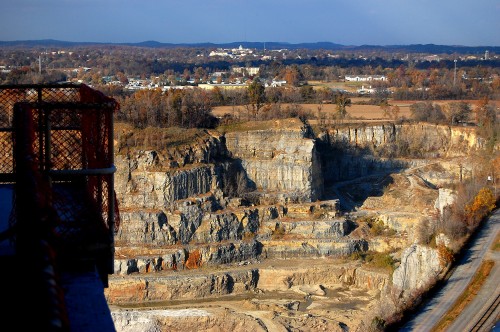 If I remember my history and what Steve told me, the rounded area on the far right was what was popularly known as the “Blue Hole,” called that because of the color of the water that filled it. At one time, this area was two quarries. When the caverns were blown, it became one big hole.
If I remember my history and what Steve told me, the rounded area on the far right was what was popularly known as the “Blue Hole,” called that because of the color of the water that filled it. At one time, this area was two quarries. When the caverns were blown, it became one big hole.
You can see the dome of SEMO’s Academic Hall sticking up in the center of the photo.
Earlier stories about the quarry and cement plant
- Flooded quarry, Sprigg Street sinkholes
- Inside the caverns
- Quarry water level goes up and down
- Natatorium and quarry from the air
Quarry photo gallery
Some of the photos look a bit repetitious, but there are subtle difference in all of them. Click on any image to make it larger, then use your arrow keys to move through the gallery. Thanks to Steve for sharing a part of Cape that has fascinated me since I was a kid.

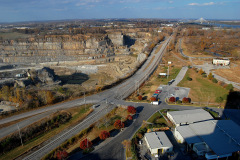
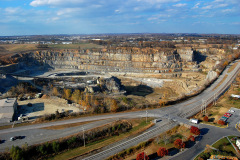
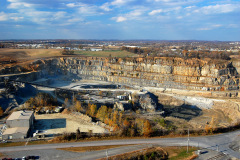
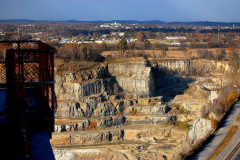
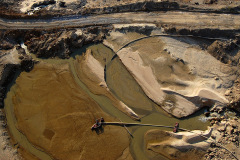
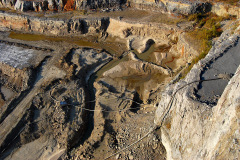
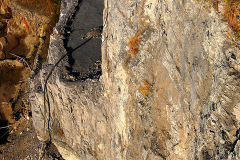
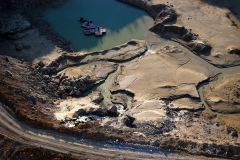
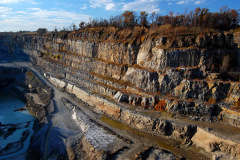
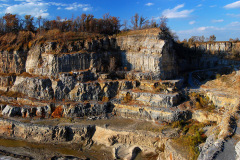
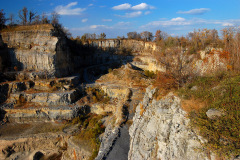
Ken, thanks for the great photos. The quarry has certainly changed over the years. I see Federal Materials is gone and some of the roads rerouted. I have always told people I was part of the cement plant Stone clan as my father, uncles and cousins all worked there for years when it was Marquette Cement. I haven’t been to the plant in over 30 years.
One of the most exciting parts of going to Cape Girardeau from Advance was passing the Marquette Cement Plant and Quarry complex. It seemed humongous to a little girl.
Jean, I do remember you from Advance….. If my memory serves me correctly Abner Looney was a relative of yours. Just as you stated …coming from Advance the Quarry was a site to behold!!! I wonder how Blue Hole BBQ sandwiches AL and I ate there over the years!
Ken, I was at Marquette the day they made the single largest blast ever; May 13, 1981. It was quite a show! I was privileged to be there thanks to Burl Medlock, one of the managers and friend of our family. I will share my photos and a link to the story.
Thanks for sending me the pix and the background. I’m sharing them with my readers.
Ken, another great historical set of pictures to bring SEMO back to life for many pictures. Thanks so very much. Extremely interesting.f
My father in law, Fred Stone, was manager of Marquette Cement for many years.
Mary – yes Abner Looney was my half-brother. My dad had two families and Abner was almost 30 years older than I.
I had the hardest time figuring out how we were related. My concept of half sibling was fairly literal and I didn’t understand at all.
Blue Hole Barbeque was the first place I took my husband when he came home with me as newly weds. From then on, we went back every visit. A great memory!
Ken has written about the famous sauce and how it has disappeared.